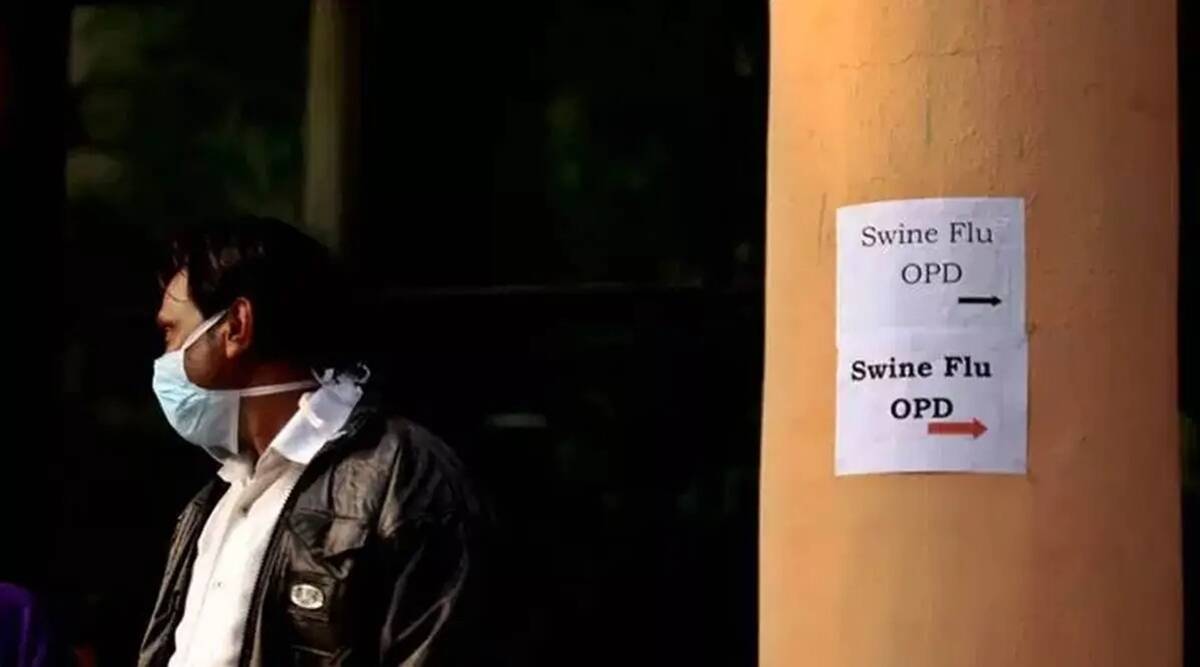
Influenza viruses belong to the family Orthomyxoviridae. Of the four genera described, the influenza A virus is the one that infects humans most commonly.
Maharashtra is witnessing a big jump in swine flu cases this year. In 2020, the state had witnessed 129 swine flu cases with three deaths; the next year, it recorded 387 cases and two deaths due to the infection. However, this year, as of August 12, the state has reported a total of 1,449 cases and 43 deaths with Pune, Kolhapur and Nashik recording the maximum fatalities. Rupsa Chakraborty spoke to Dr Lancelot Pinto, epidemiologist and pulmonologist at Hinduja Hospital, to know more about the infection, the reasons behind the surge, and precautionary measures that need to be followed. Excerpts from an interview:
What is swine flu or influenza H1N1?
Influenza viruses belong to the family Orthomyxoviridae. Of the four genera described, the influenza A virus is the one that infects humans most commonly. The virus has proteins called hemagglutinin (H) and neuraminidase (N), both of which help it in infecting cells in the human respiratory and gastrointestinal tract. There are at least 18 H subtypes and 11 N subtypes, and combinations of these are used to denote the type of strain. Swine flu — named so as it was a reassortment of human, pig and bird influenza viruses — has the H1 and N1 subtypes of these proteins, and is hence, called H1N1. It is a type of influenza A virus. It was responsible for a pandemic in 2009 and, since then, H1N1, H3N2 and some influenza B strains have been the predominant strains circulating worldwide.
Why is the state witnessing such a surge in cases this year?
Influenza virus and associated illnesses are known to peak in the monsoons. The surge this year could be due to a combination of three factors— firstly, this is the first monsoon since 2020 in which no form of lockdown is being imposed. This is especially true for schools, workplaces, and social gatherings, all of which tend to facilitate spread. Secondly, it is possible that Covid-19 has made individuals more sensitised towards approaching healthcare as compared to earlier. Thirdly, there is a widespread acceptance to getting nasopharyngeal swabs, and better availability of diagnostic test kits, leading to increased testing. However, it is possible that this is a genuine surge, and what we are witnessing is an exceptional year in terms of the overall number of cases.
It has been seen that in alternative years, the state/Mumbai reports a large number of swine flu cases. What are the epidemiological reasons behind it?
Reassortment of viral proteins on the surface of the influenza virus can occur every few years. This can render existing immunity from past infection ineffective as the virus evades the antibodies formed as a result of exposure to the earlier strains. Such "antigenic drifts" can cause year-to-year variability. Once every decade or so, larger changes in the virus or "antigenic shift" can have the potential of causing pandemics as the creation of a new strain can have the same effects as SARS-CoV-2 had on a naïve population.
How are the symptoms of Covid-19 different from those of swine flu?
Symptoms are similar and can be difficult to distinguish; fever, nasal congestion, headache, sore throat, muscle aches and pains, cough are manifestations of both infections. Diarrhoea can also be seen in both. Secondary bacterial infections are possibly more common in influenza than what we have witnessed in Covid-19 over the past two years. In the absence of having a documented close contact with someone who has influenza, it is impossible to distinguish between influenza and Covid-19, based on symptoms. Testing is the only way to confirm the infection. What are the precautionary measures the citizens should take?
Just like Covid-19, influenza tends to cause the most severe disease among those with compromised immunity. These would include individuals who are elderly, those with immunosuppressive conditions or on medications that suppress immunity, pregnant women, and those with comorbidities. Such individuals should especially avoid crowded spaces and closed, poorly ventilated areas. They should mask up, especially when indoors, around other people. The annual influenza vaccine is protective, and those who have not received it this year should do so after consulting with their doctor. Frequent hand sanitising and isolating when sick is useful to protect oneself and close contacts. Oseltamivir, when started early, can potentially reduce the duration of illness and transmissibility, and would be recommended, especially for high-risk individuals.
What kind of patients requires hospitalisation?
Most individuals who have a severe disease tend to be immunocompromised. Influenza can often make individuals vulnerable to secondary bacterial infections after the initial viremic phase, and one needs antibiotics if there are indicators of a secondary infection. Viral respiratory infections are known to trigger worsening of underlying chronic diseases, and those with respiratory diseases such as COPD, asthma and underlying heart disease are especially vulnerable.
Courtesy:The Indian Express |
